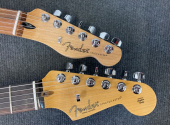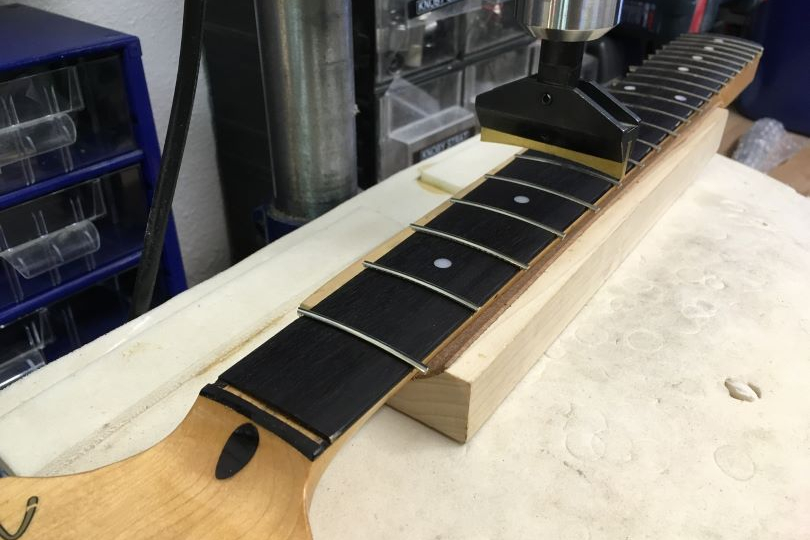
Under the Hood #32: How to Upgrade Old Japanese Fenders and Their Copies
Nowadays, Japanese Fenders and their copies from the 70s, 80s and 90s are quite popular. They can be found for a good price and are usually in very good condition. However, over the years of playing, the ravages of time have taken their toll, and some things need to be replaced or improved. And some quality work can make these instruments several levels better.
The reasons for the attractiveness of these models are simple. They're stylish, old, affordable and available. We are talking about full-featured, versatile instruments that will please everyone from amateurs and enthusiasts to pros. They're guitars for the studio, the stage, the rehearsal room and the home. And some of them can truly be described as vintage.
A significant number of musicians yearn to have an old guitar that's had some work done to it, has been played but is still in full force. In most cases, this means that you have to spend a considerable amount of money to acquire such an instrument. However, this may not always be the case. For example, with the popular Japanese Fenders and their copies, all of the above applies – the only difference is that you pay much less. And even if you do pay a little extra for some upgrades, it still pays off handsomely.
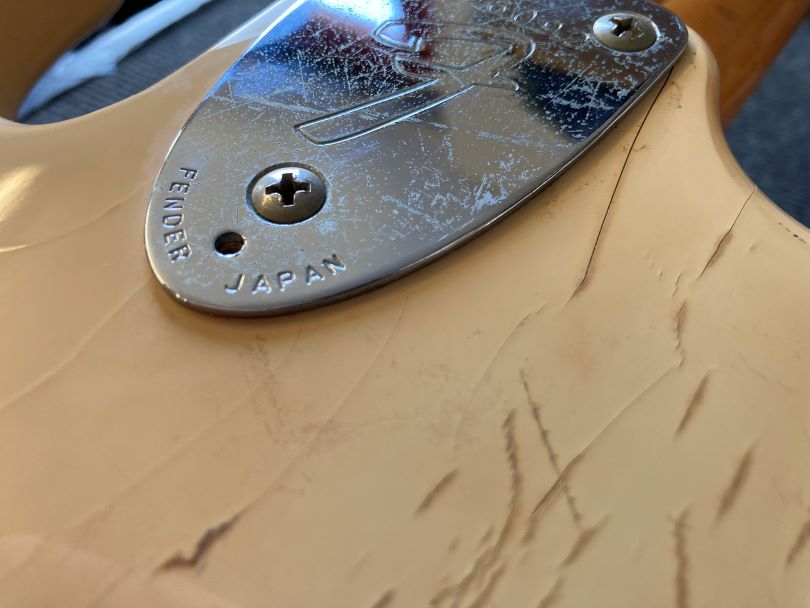
Upgrade thanks to repair
When I mentioned the ravages of time on older instruments in the introduction, I was referring not only to the spontaneous ageing of the material but also to the used and worn-out components. If you want to play your guitar fully, it needs to be in great condition. With Japanese Fenders and their copies, this is relatively easy to achieve. In the spirit of Leo Fender's idea, these guitars are simple and easy to repair – everything on them is replaceable. This is a virtue that everyone will appreciate, especially when an old guitar needs a little tweaking.
You can find several decades-old Japanese Fenders in various conditions. It’s the same story for their copies. But the condition of the neck is always important. If it's all right and with a working adjustable brace, it’s half the battle. Everything else is easy to improve.
The purpose of this article is to show that it simply pays to buy these guitars. And I'm not just saying this because of my experience as a guitar technician but also because of the opinions of the musicians and enthusiasts I meet at work. So let's see how to upgrade one of these guitars if you get one.
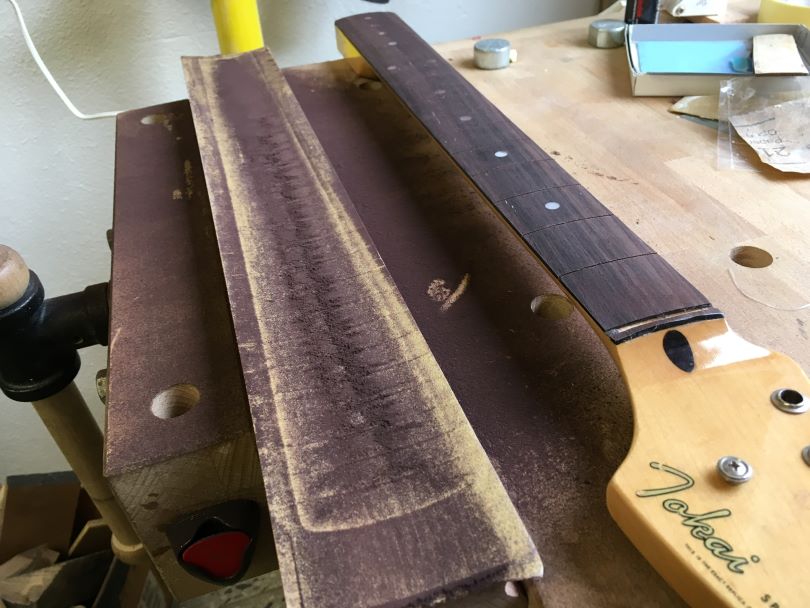
Condition of the neck
Let's start with the most important thing, the neck. I'm going to repeat myself, but when buying an old electric guitar, it's crucial to check the condition of the neck. If it has lasted in good shape and hasn't warped over the few decades, it's likely to last a good few more years. You don't have that assurance with new, common mass-produced models.
If the guitar has a good neck, everything else will get fixed, and it will be fine. But a bad, warped neck is almost not repairable, especially on an old guitar. Or it won't be very cost-effective.
Benefits of refret
Refret is a good investment. Old Japanese Fenders and copies of them were popular instruments for many years and were played a fair bit. You can usually tell this by looking at the frets, which are often original but indented from playing and too low from sanding. And that takes away a lot from the playing comfort.
Refret also has the advantage that after removing the frets you can resand the fretboard to the required shape and condition if necessary. You can install any frets you like. And if the work is done with quality and precision, the result is a neck as good as new.
For some, refret may seem a dangerous, radical or expensive procedure. Let me assure you otherwise. It's common with guitars, and it's necessary once in a while. While a complete job usually costs 80 euros and more, it's well worth it considering how you improve your guitar.
The most common repairs of electronics
Japanese Fenders didn't use as high-quality electronics as their American counterparts, but getting your hands on a piece with original and intact electronics is still common today. After years of use, some parts usually need replacing though.
However, this is also a common and relatively quick matter. Japanese models of all makes used similar components, so the glitches are recurring. Most of the time it is signal dropout when handling the guitar or the connected cable. Or there is a crackle when turning the potentiometer or manipulating the pickup switch. The point is to find out which component is causing the problem and then replace it – and check the whole electronics to be sure. These common repairs include replacing the female jack, pots and pickup switches.
And the price? Compared to the upgrade you will get, it's all worth it. It depends on what new and fully compatible parts you use, but to give you an idea – for a quality Switchcraft female jack or a golden mean Gaoh pot you'll pay around 5 euros. It pays to buy better quality switches because they have a fragile construction and it is important that they last a long time with constant use. Here the price is also in several tens of euros. Add the cost of professional service. However, if you are skilled in soldering components, you can save on labour by trying it yourself. But still, use your common sense and consider whether or not you dare to do it.
To sum it up, repairs of electronics on these guitars are not unsolvable; quite the opposite. Replacing problem components will result in perfectly sounding and reliable electronics.
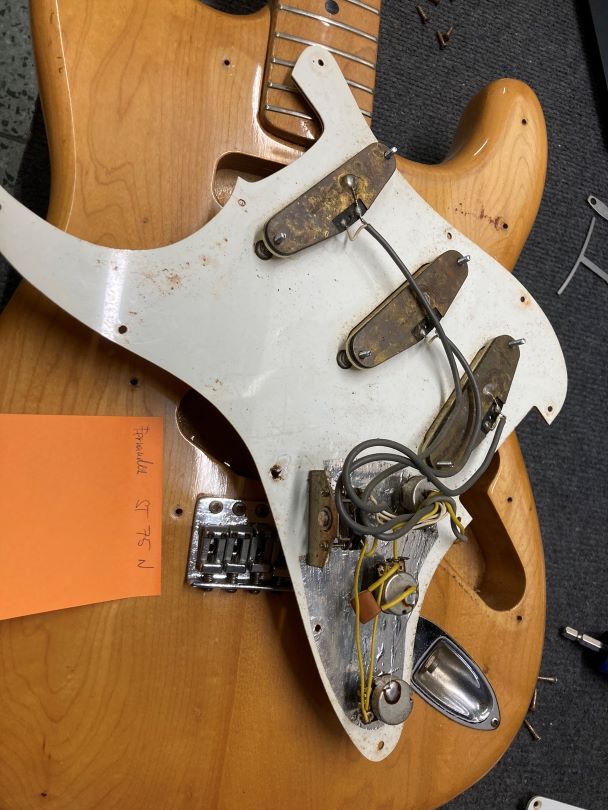
Pickups
In most cases, Japanese originals and copies have fully functional pickups. If sound problems occur, it is usually due to the replaceable small parts in the previous paragraph.
With pickups, the question is whether they sound good or not. Some people like the sound of old Tokai copies and similar brands, while others don't. There is nothing easier than to replace the pickups if necessary. You can keep the originals or sell them.
It's a good idea to try to estimate the level of compatibility of the pickups with the guitar. Sometimes you can get the best pickups on a cheaper guitar, but the resulting sound may not be very good. I recommend consulting a guitar repair shop that has experience with these instruments when choosing pickups.
Service
If you buy an old Japanese Fender or a copy from somewhere in the world (mostly happening in Japan these days), often the guitar will arrive unassembled. This can spoil the first impression for many people. But please don't be fooled. If you don't feel comfortable playing the guitar, it doesn't necessarily mean it's bad. It's usually just that it hasn't been serviced in years.
After a good and thorough service, which should include cleaning the guitar and changing the strings, the guitar will usually improve by several levels. Adjust the guitar action height, octaves, zero fret, pickups and vibra bridge, and you're done.
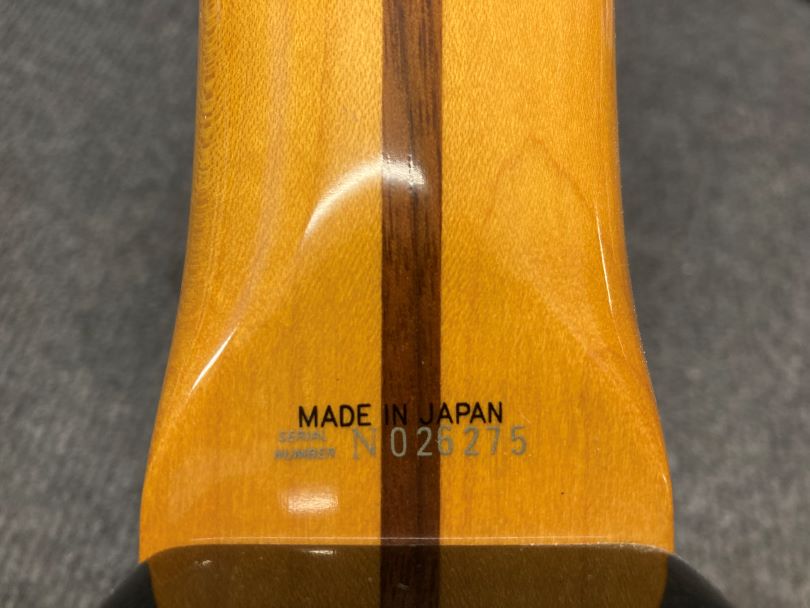
Consult the guitar's condition
If you decide to purchase the instruments mentioned above, from my own experience, I recommend visiting a guitar repair shop afterwards. There they will check the neck, electronics and all other parts of the guitar. After the diagnostics, you will be given advice on any necessary repairs.
Japanese Fenders pay off
Japanese Fenders have always been considered to be high-quality instruments. You can read about their history in previous articles. These guitars can be bought today for a reasonable and affordable price; they play really well and by refret or repairing the electronics, for example, you can make an inexpensive investment to get an old, well played and quality instrument in a condition comparable to a new guitar.
And what brands are we talking about? I recommend checking out Fender Japan of the 80s, followed by Fenders Made in Japan and Crafted in Japan. Of the copies, Tokai and Fernandes are popular brands. These guitars are stylish and many of them are really pleasant surprises. I can say from my own experience that they are worth trying. So don't hesitate and check them up.
If you have found an error or typo in the article, please let us know by e-mail info@insounder.org.


